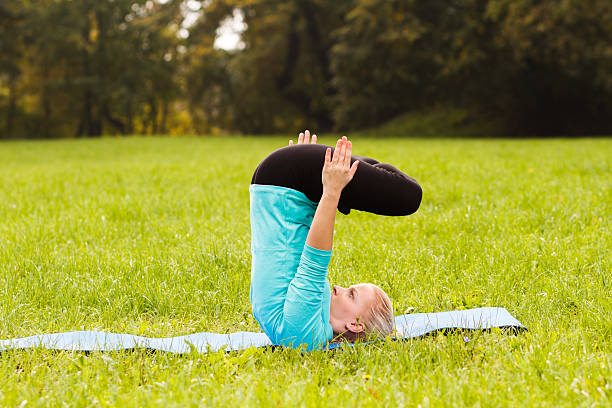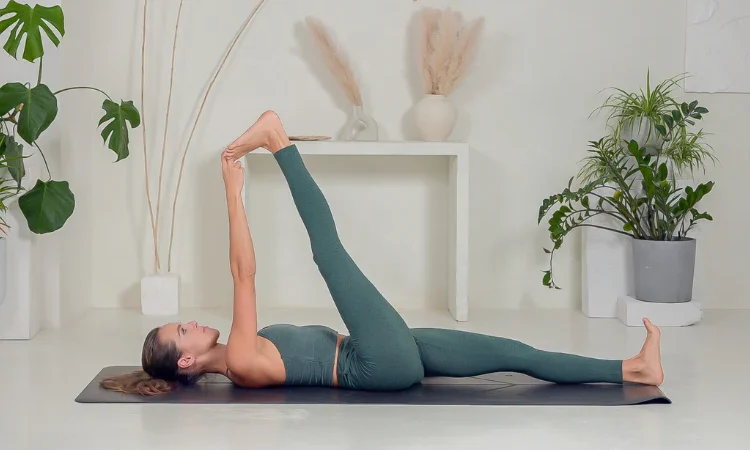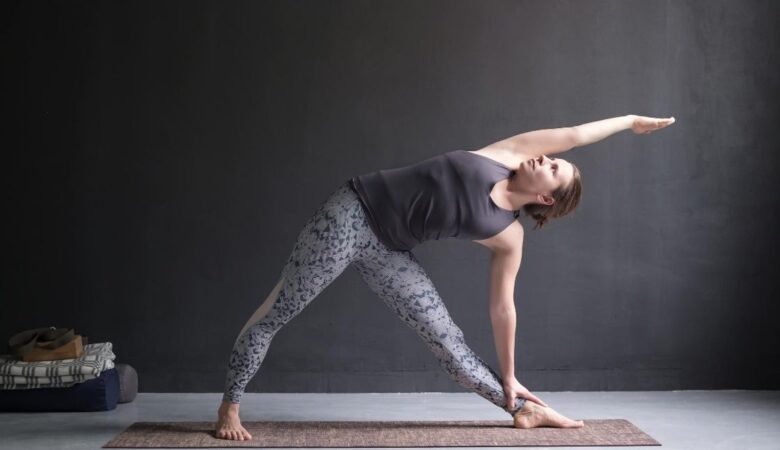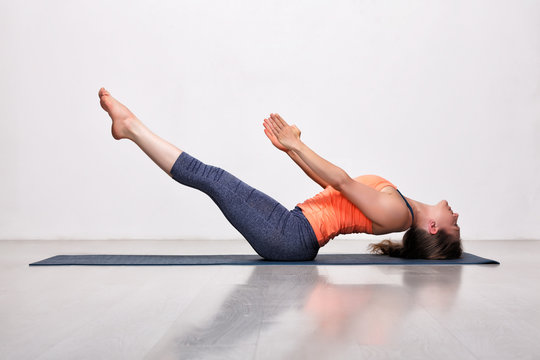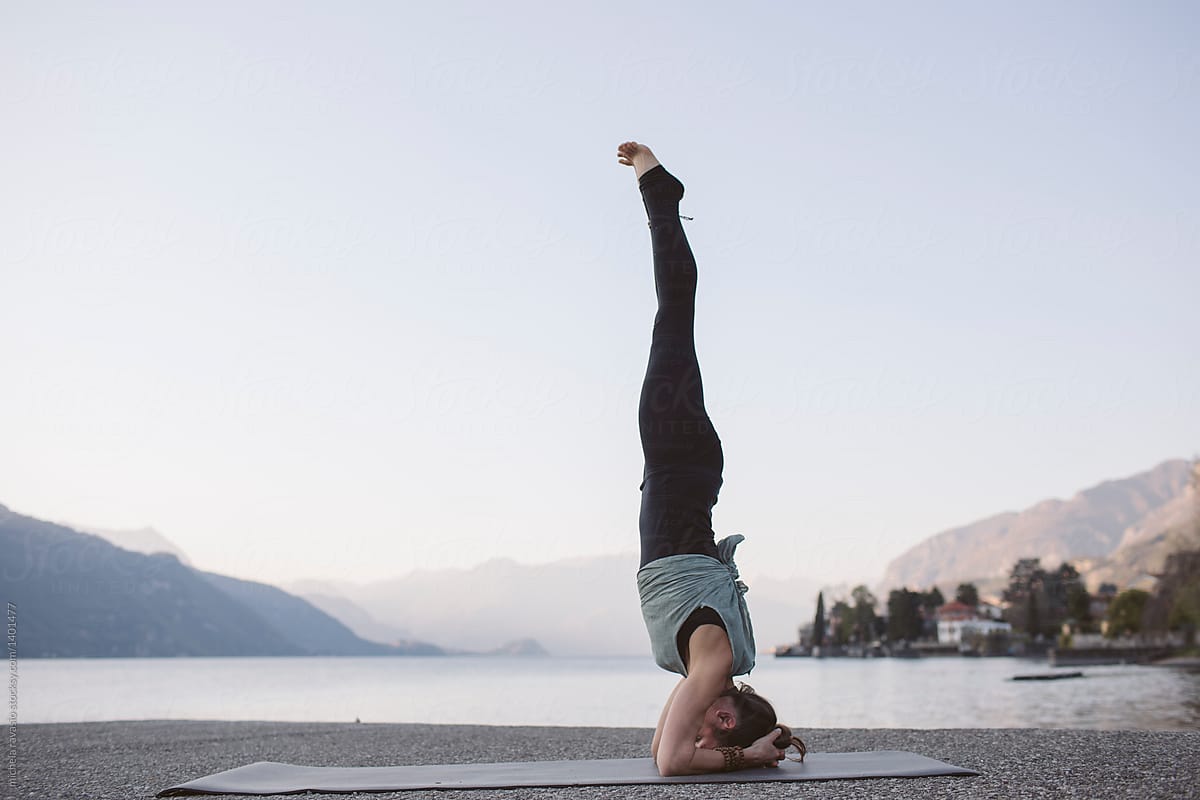Urdhva Padmasana, also known as the Upward Lotus Pose, is a powerful and advanced yoga asana performed in a shoulder stand or headstand position with the legs in Padmasana (Lotus Pose). This pose integrates the grounding and meditative benefits of the lotus position with the revitalizing qualities of an inversion.
Table of Contents
What is Urdhva Padmasana?
Urdhva Padmasana is an inversion posture where the legs are placed in Lotus Pose while the body is either in Sarvangasana (Shoulder Stand) or Sirsasana (Headstand). It strengthens the upper body, deepens concentration, and improves blood flow to the brain.
Derived from Sanskrit:
-
Urdhva = Upward
-
Padma = Lotus
-
Asana = Posture
This asana symbolizes spiritual awakening, upward energy flow, and deep inner balance. It is considered a posture for advanced practitioners because it requires flexibility, balance, and control.
There are two main variations:
- Urdhva Padmasana in Sarvangasana (Shoulder Stand Lotus Pose)
- Urdhva Padmasana in Sirsasana (Headstand Lotus Pose)
Preparatory Poses:
- Padmasana (Lotus Pose)
- Sarvangasana (Shoulder Stand)
- Sirsasana (Headstand)
- Setu Bandhasana (Bridge Pose)
- Baddha Konasana (Bound Angle Pose)
- Adho Mukha Svanasana (Downward Dog)
How to Do Urdhva Padmasana (Step-by-Step)
This is an advanced asana. Warm up properly and ensure you are comfortable with Padmasana, Shoulder Stand, or Headstand before attempting.
Variation 1: Urdhva Padmasana in Shoulder Stand
Step 1:
Lie on your back and lift your legs up as you push your torso off the floor. Support your lower back with your hands. Elbows should be close together; body aligned vertically.
Step 2:
Slowly bend one leg and place the foot on the opposite thigh. Bring the other foot onto the opposite thigh to complete Padmasana.
Keep your hands supporting your back or stretch them flat on the mat for a deeper challenge.
Step 3:
Keep your spine straight and balance the body. Breathe slowly and deeply. Hold the position for 5–10 breaths or as long as comfortable.
Step 4:
Unfold the legs gently. Return to shoulder stand or slowly come down vertebra by vertebra into Savasana.
Variation 2: Urdhva Padmasana in Headstand
Step 1:
Begin in a tripod or supported headstand position. Ensure your shoulders, neck, and core are engaged.
Step 2:
Carefully fold one leg at the knee and place it on the opposite thigh. Do the same with the other leg to form Padmasana. Maintain balance and vertical alignment.
Step 3:
Close the eyes if comfortable, and breathe steadily. Hold for 5–15 breaths.
Step 4:
Gently release the legs and return to the standard headstand. Slowly lower the legs to the ground and rest in Balasana (Child’s Pose).
Follow-up Poses:
- Matsyasana (Fish Pose) – excellent counterpose to shoulder stand
- Balasana (Child’s Pose) – after headstand
- Savasana (Corpse Pose) – always close your practice with rest
Benefits of Urdhva Padmasana:
The benefits of Urdhva Padmasana are…
1. Enhances Circulation and Brain Function:
Being an inversion, Urdhva Padmasana increases blood flow to the brain, enhancing focus, clarity, and energy levels.
2. Improves Core Strength and Balance:
Holding this pose requires engaging the abdominal muscles, spinal muscles, and shoulders, building total-body strength.
3. Opens Hips and Increases Flexibility:
Combining Padmasana with an inversion provides a deep hip opener while maintaining spinal elongation.
4. Stimulates Chakras:
Encourages the upward movement of prana through the Sushumna Nadi. Activates the Sahasrara (Crown Chakra) and Anahata (Heart Chakra). Deepens meditative states and spiritual connection.
5. Calms the Nervous System:
Like other inversions, this asana can relieve anxiety, stress, and mental fatigue when practiced mindfully.
6. Supports Endocrine Health:
Stimulates the thyroid, pituitary, and pineal glands, helping regulate metabolism and hormonal function.
Contraindications and Precautions:
Urdhva Padmasana is not suitable for everyone. Avoid or modify the pose in the following conditions:
- Neck or spine injuries
- High or low blood pressure
- Glaucoma or ear issues
- Heart disease
- Pregnancy
- Knee or hip problems that limit Padmasana
Important Tips:
Always warm up with preparatory poses like Padmasana, Sarvangasana, Sirsasana, and Supta Baddha Konasana.
- Use a folded blanket under shoulders in Sarvangasana to avoid neck strain.
- Don’t force the legs into Padmasana. Respect your body’s flexibility limits.
- Beginners should work with a yoga teacher before attempting the full pose.
Conclusion:
Urdhva Padmasana is a profound yoga posture that merges the grounding energy of Lotus Pose with the revitalizing power of inversions. It demands physical strength, flexibility, and mental focus, making it ideal for experienced practitioners seeking deeper connection, balance, and spiritual growth.
Approach this asana with patience and respect for your body’s limits. With consistent practice, it can become a deeply transformative part of your yoga journey, offering not just physical rewards, but mental stillness and energetic elevation.
FAQs:
Q. Is Urdhva Padmasana suitable for beginners?
A. No, this pose is considered advanced. Beginners should first master Padmasana, Sarvangasana, or Sirsasana separately before combining them.
Q. What are the physical benefits of this pose?
A. It strengthens the shoulders, core, and spine while improving blood circulation and stimulating internal organs.
Q. Can I use props for Urdhva Padmasana?
A. Yes. You can use a wall for support in inversions or a folded blanket under your shoulders in shoulder stand.
Q. How long should I hold Urdhva Padmasana?
A. Start with 5–10 breaths. As you progress, you can hold the pose for up to 1–2 minutes, depending on your comfort and stamina.
Q. Is Padmasana necessary in this pose?
A. Yes, Padmasana is an integral part of Urdhva Padmasana. If you’re unable to sit in full lotus, focus on hip-opening poses first.

